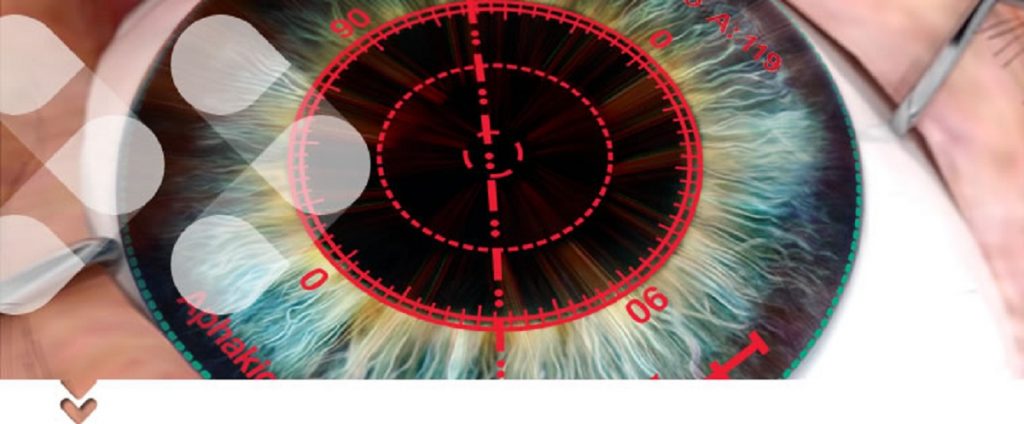In a modern cataract surgery, the patient’s natural lens, which has become cloudy, is removed and replaced with an artificial lens, known as an intraocular lens implant or IOL. Before this can take place, a surgical plan is created. The cataract surgeon selects the IOL type, and its refractive power, in order to provide the best possible postoperative vision, and reduce or eliminate the patient’s dependence on glasses after surgery. In patients with astigmatism, the doctor may plan to make astigmatism-correcting corneal incisions, known as limbal relaxing incisions (LRI), during the course of surgery, or may choose to use a toric IOL specifically designed to correct astigmatism. In either of those cases, the patient’s postoperative vision depends in large part on correct placement of the incisions or toric IOL.
To help in making these decisions and formulating a patient’s surgery plan, cataract surgeons have a wide array of diagnostic tools at their disposal. From the traditional refractive examination, to advanced scanning devices that provide microscopically detailed maps of the inside and outside of the eye, surgeons have a wealth of information about each patient’s unique eyes. However, these tests and diagnostics have traditionally had a major limitation: they are performed days or weeks in advance of the surgery. Once the surgical plan is determined, the IOL is selected, and the procedure begins, the surgeon has no access to the kind of detailed diagnostic information provided in the preoperative examination, and is limited in his or her ability to determine and adjust to the unexpected. In many ways, it would be similar to an airplane pilot creating a flight plan on the ground, then having to fly by sight alone, without radar or other navigational aids.
In recent years, that limitation has become a thing of the past. The ORATM System is a first-of-its-kind diagnostic device. ORA is a wavefront aberrometer, a device that measures minute defects, or aberrations, in the way light passes through the patient’s cornea and lens. Wavefront aberrometers have been used for over a decade in laser vision correction, providing data for custom wavefront LASIK. What is unique and revolutionary about the ORA System is that it is used during the cataract procedure, providing the surgeon with real-time information about the patient’s eye. This continuous stream of data can help guide the surgeon’s placement of LRIs, aid positioning of toric IOLs, and can even suggest changes in IOL power based on how the patient’s eye reacts to the extraction of the cataract. While the ORA System’s revolutionary performance provides previously unheard-of levels of customization and can provide better results to any cataract or refractive lens exchange patient, there are certain patients who benefit significantly from an ORA-enhanced procedure:
- Patients with significant astigmatism obtain demonstrably improved outcomes thanks to ORA’s precise real-time maps, which pinpoint the location of corneal astigmatism and can show changes in astigmatism after the lens is extracted.
- Patients who have had previous refractive surgeries such as radial keratotomy (RK), photorefractive keratectomy (PRK), or LASIK, can present challenges to the cataract surgeon when selecting IOL power. The ORA provides data that allows the surgeon to select the optimum lens power for these patients, providing better outcomes than would be available using preoperative diagnostics alone.
The cataract specialists at Whitsett Vision Group have been using the ORA System for nearly five years, and have performed over 25,000 cataract and refractive lens exchange procedures using its real-time diagnostics. After conducting several clinical studies comparing the outcomes of ORA-assisted cataract and refractive lens exchange surgeries to those of conventional procedures, we believe that ORA provides better outcomes, and is one of the most significant recent advances in lens surgery technology.
If you have any questions about the ORA System or about cataract surgery in general, or would like to schedule an examination and consultation with one of our cataract specialists, please feel free to contact us. One of our surgical counselors would be pleased to answer your questions and schedule your appointment.


